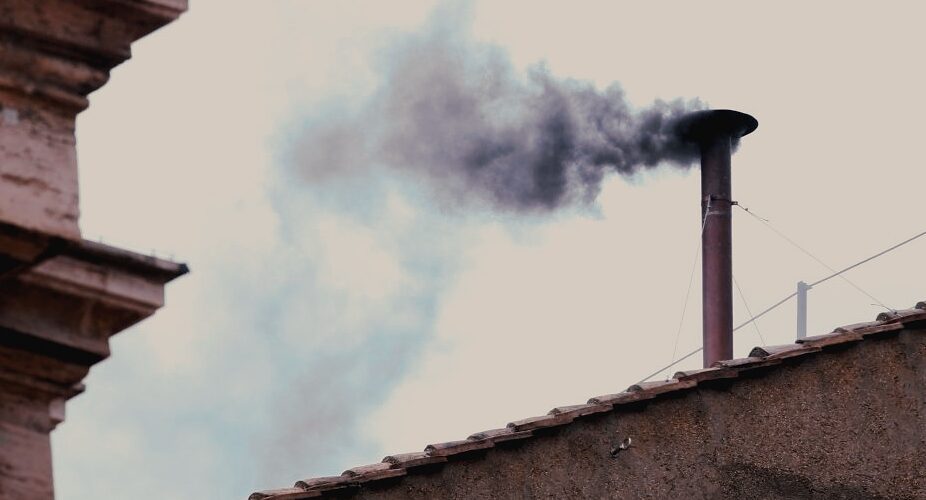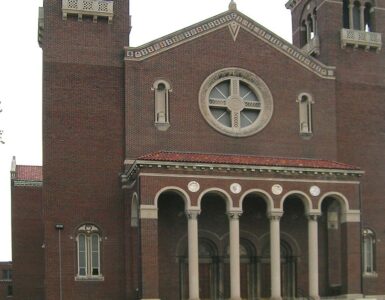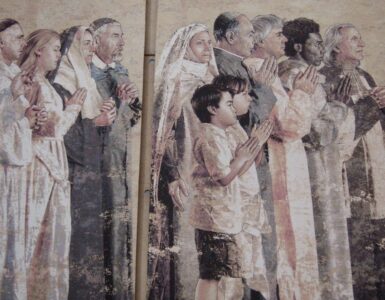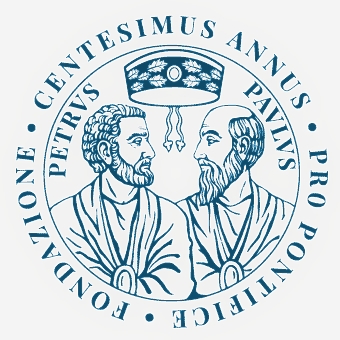On his deathbed, comedian W. C. Fields was reputed to have been frantically thumbing through a Bible. When questioned the confirmed atheist replied in his inimical way, Looking for loopholes. This title came to me just after I finished reading the complex novel by author Robert Harris The Conclave. (2016) It is about the Catholic traditional rite of selecting a new pontiff upon the death or resignation of the incumbent. Harris, not to be confused with fellow writer, Thomas Harris, the author of The Silence of the Lambs, has also written, such works as the Fatherland and Munich.
In her review of the recent film, based on Harris’ book and produced by Edward Berger and written by Peter Straughan, Nell Minow, the Contributing Editor at Roger Ebert.com, opines: Conclave takes us inside an ancient, mysterious process that has inspired endless curiosity for hundreds of years…namely the assembly of Catholic cardinals to select a new pope. I think Minow falsely assumes that the conniving, manipulation, violations of Christian morality and breach of Canon Law in the film are typical for such a proceeding. US Magazine quipped about all the dealings and behind the scenes machinations: Cardinals! They are just like us.
The movie is rich with attendant mystery behind the locked doors of the Conclave of 118 voting members of the College of Cardinals. The film begins with Cardinal Jacopo Lomeli’s* sitting by the nameless pope’s deathbed. After a short while the pope dies of a heart attack. There is no hint of foul play since he was known to have suffered from heart disease, When a pontiff has shed his mortal coil, his ring, which signals the Shoes of the Fisherman’s reign was immediately removed and destroyed in a special symbolic rite. Minow observed that it came off with difficulty, symbolizing the drama which was to follow.
In the book, Cardinal Lomeli is the main character, by virtue of his position as Dean of the College of Cardinals. Consequently, it was his job to manage the Conclave and elect a new pope. What follows is eight difficult ballots with several plot changes, including a few instances of nefarious intrigues. The main characters are the handful of candidates for the vacated seat of the late pope. They include moderate, Canadian Joseph Trembly, the Camerlengo, Nigerian Joshua Adeyemi, Aldo Bellini of the United States, a liberal in the vein of the late pope and the Italian, arch-conservative Goffredo Tedesco. Lomeli also receives some votes.
Dean, as Lomeli is often called, suffers several dark nights of his soul during the gathering and prays he will not be chosen. He had tried to resign his office, but the dying pope refused to accept. The wheeling and dealing revolves around Tedesco for the fear that with his solid Italian backing he will eventually emerge as the winner and set the Church back a century.
Before the balloting process begins, Lomeli gives a homily, encouraging the College to embrace uncertainty, which some interpreted as putting his red beanie or zucchetto in the papal ring. During the balloting, rumors ran wild through the Vatican grapevine. The most significant one was that the pope has been thought to have relieved Tremblay from all his offices and demanded his resignation on the eve of his death. Another rumor was that the pope was having serious doubts about, not his faith, but in the Church itself.
The key surprise was the revelation and dramatic arrival of the little-known Cardinal Vincent Benitez, the Archbishop of Kabul, Afghanistan. His arrival at the Conclave was the first anyone had ever heard of him and he had to be added to the official list of voting prelates. Benitez had been created a Cardinal recently by the pope in pectore, which is meant to be kept a secret. He was what American historians would have called a midnight appointment, a key official designated during the waning moments of an out-going president’s term.**
Following the third ballot, an incident in the cardinals refectory between Adeyemi and a Sister Shanumi, a Nigerian nun occurs. She later confesses that 30 years ago she and the cardinal had a sexual relationship that resulted in a baby boy. A whisper campaign evolves, effectively knocking the leading candidate out of the race.
The plot thickens when the Dean learns that Cardinal Tremblay was the one who arranged for Sister Shanumi’s trip to the Conclave. Lomeli breaks into Tremblay’s room and discovers documents which prove that he had also committed the sin of simony, by giving cash payments to several cardinals over the years to gain their favor. These events seemed highly contrived and probably arose out of Harris’ vivid imagination rather than any historical research.
Simony is a serious sin, named after Simon Magus, The Magician in the Acts of the Apostles where he is described as having offered two disciples of Jesus payments in exchange for their imbuing him with the power of the Holy Spirit on anyone, over whom he would extend his hands. Dante thought it so serious a sin he confined simoniacs to the 8th Circle of Hell in his Inferno. This revelation eliminates Trembly from the race, leaving Bellini as the only one who can stop Tedesco.
Lomeli’s assistant, Father Raymond O’Malley adds to the uncertainty when he discovered that the late pope had paid for a plane ticket for Benitez’s trip to Switzerland for some mysterious medical procedure. In the second major surprise of the book, Benitez is elected on the 8th ballot. Moments after Benitez’ election is confirmed, O’Malley reports to Lomeli that Benetiz’s secret visit to a medical clinic involved a laparoscopic hysterectomy at a Swiss clinic. It comes out that the late pope knew of his condition.
In his defense, Benitez states he had been raised in the Philippines*** where sons are more important than daughters. His parents passed him off as a boy for his whole life. He said he never had any idea he was different from all other men. He accounted for this by stressing the modesty, usually associated with Catholic seminary life.
It was not until he had an appendectomy at the age of thirty that the doctors discovered he had a uterus and ovaries. He elected to keep his female organs because I am who God made me! (The film changes this to read: He believed his uniqueness could make him more useful in his role…) It is at this point that the script loses virtually all of its credibility and perhaps reveals its real intent.
He chooses the ironic name, Innocent XIV, considering he becomes a party to one of the most horrific violations of Church Canon Law. Lomeli and the Irish monsignor agree to the conspiracy to hide the truth of her sexuality, based on their belief that God divinely inspired the results.
It is at this point the Conclave introduces us to the word, Intersex, an umbrella term for people who are born with one or more traits that do not match their sexual determination. What confuses me is the complexity of the definition and the mysterious situation of just what male anatomical organs Benitez had or lacked.
From what I could find from the book and the film is that he was completely female and virtually all his male characteristics were superficial and came from his life-long charade as a man. Conclave’s interjection of gender roles from a non-binary world is obvious to me. In Conclave, the writers are trying to inculcate the obvious doubts and uncertainty of the central figure sexuality in the legion of unsuspecting Catholics who might see the film. Bishop Robert Barron said any Catholic should run away from it as fast as they can.
Since reviews imply that Benitez’s anatomy is traditionally female, therefore she is ineligible to be a priest, let alone a pope. In truth, the deceased pope had unleashed a conspiracy that would rock his Church to its ancient rafters. I think the film is trying to create a huge loophole to promote their hope that eventually the Church will accept female priests and even a pope. To me this is far more dishonest than it is artistic.
Benitez’s character is more akin to Barbra Streisand’s film Yentl. Yentl is a woman living in an Ashkenazi shetel, named Yanev. Her Papa secretly instructs her in the Talmud, despite the proscription of such study by women, according to the customs of her community. After her father dies, she cuts her hair short and dresses like a man, taking her late brother’s name Anshel and enters a Yeshiva, a Jewish religious school, impersonating a man.
Megyn Kelly, formerly of the Fox Network, wrote that she was sorry she had wasted her time watching it. It was one of the most disgusting films she had ever seen. Kelly says there are almost no redeeming characters…every cardinal is morally bankrupt and repulsive… She said they would never have made a film like this about the Muslims and bemoaned the fact that it had debuted around Christmas.
I was gladdened that Kelly, who was raised a Catholic and divorced from her first husband, has been collaborating with Bishop Barron and her ex-husband to annul their marriage, so the Church can legitimize her second marriage. This proves to me that the light of faith still burns brightly in her soul.
After Kelly’s vociferous reaction to the film, many of its defenders spoke out, a number of whom were raised in the faith but were not serious about practicing it. The sad truth is that the golden days have been gone for 50 years, when Hollywood had to bow to the Legion of Decency and a code that could condemn a film. Since then, Hollywood has promoted virtually every perversion under the stars. They have often used their power to subtly attack many Church teachings, especially the moral ones on sex. Since 1950, the most egregious films have been: Monty Python’s The Life of Brian, (1979) Dogma,(1999) The Stigmata (1999) Quills (2000), and Doubt, (2008).
Kelly, who opines regularly from her platform on her eponymous podcast, merely scratched its surface of what I see is the innards of a devilish conspiracy to force the Church to change its teachings on women in the priesthood. To me this is the worst offense…the true lie of the film.
I truly believe they think that their Pope Innocent could serve as the viable loophole or even a Trojan Horse in front of the Church’s protective armament against Satanic beliefs. There are no loopholes here or even symbolic presents from Greek mythology. This is true because we have been divinely promised that The Gates of Hell will never prevail against the Church, no matter how hard and how much effort they may put into films like the Conclave.
The talk of a woman pope dates back to the legendary Pope Joan in the ninth century. Hers was an anti-Catholic legend about a woman who purportedly reigned as pope from 855-857. However, her story did not surface until the 13th century. Most versions of the legend describe her as a talented and learned woman who disguised herself as a female at the behest of her lover, reputed to have been a member of the Curia. Her pretense abruptly ended when she gave birth during a procession. She died shortly after, quite possibly a murder victim.
The date of her hypothetical election makes the story easy to dismiss because the interregnum between Pope Leo IV and Benedict III was much shorter than two years having lasted only a few weeks. Had such a scandal existed the enemies of the Church would have plastered her story all over the news sources of their day. Her name was later removed from the Vatican’s official lists of Catholic pontiffs, followed by their implementation of a ritual to ensure that all its future popes would be male.
Pink Smoke over the Vatican was an award-winning documentary, produced in 2011 by Jules Hart about women who have been ordained as priests in the Roman Catholic Church. It was produced in answer to the Congregation for the Doctrine of the Faith’s order of excommunication for the crime of attempting sacred ordination of a woman. No specifics are mentioned in or about Smoke.
According to the on-line publication, Simply Catholic, the tale of Pope Joan is an absolute fiction and has long been dismissed by all reputable scholars in Church history. The simple fact is that there’s not a single piece of historical evidence to support the claim that Joan ever existed or that there was ever a female pope.
In one of his most stellar moments as pontiff, Pope Francis unequivocally stated in a recent article for America, a Jesuit publication that women cannot be ordained as priest but emphasized the important role they have to play in the life of the Church. He answered the question as to why they can’t they be ordained. It is because of the Petrine principle has no place for that, which was that of ministry.
He also explained an alternate way women can contribute, namely the Theology of the Marian Principle. The pope defined this as femininity in the Church where a woman sees a mirror of herself because she is a woman and a spouse. A Church that is purely Petrine would be one which has been reduced to merely a ministry. The Church is more than just a ministry. The Church is woman, The Church is spouse. Therefore, the dignity of woman is mirrored in this way.
Personally, I find Joan’s story far more interesting than the manufactured tale in the Conclave. Submitting a candidate who is clearly a violation of Canon Law is sinister and unworthy of praise. Harris is too good a novelist to waste his talent and our time on this despicable story. We all would have been better served had he made the plot about the murder of the pope and he could have used the sex issue to separate the possible guilty parties.
*Some of the characters in the book have had their names changed for the film. Lomeli’s name is Cardinal Lawrence, played by Ralph Fiennes. I decided to use only the names from the book.
**Dates back to John Adams in 1801, after his losing to Thomas Jefferson.
***Changed to Mexico.






























